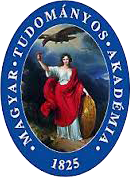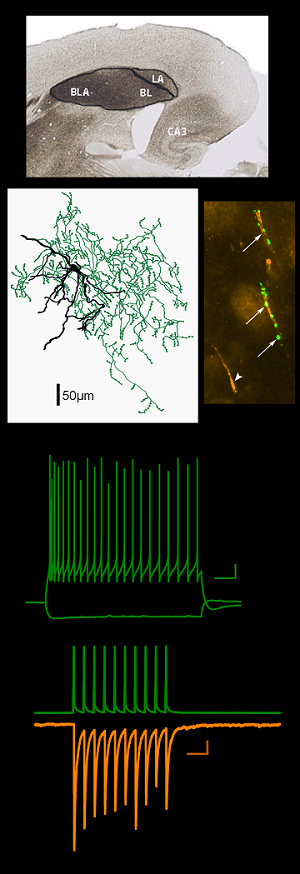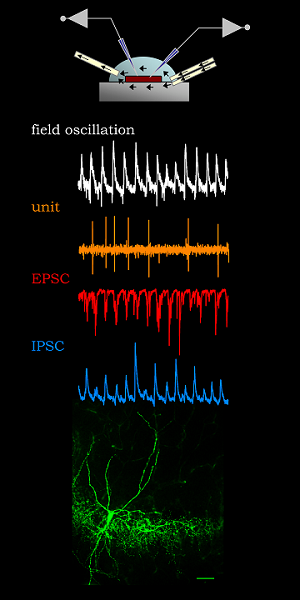Methods
We have developed a novel type of slice chamber, where the network oscillations can be readily studied combined with optical imaging (Hájos et al., 2009; Hájos and Mody, 2009). This technical improvement helped us to uncover the cellular and network mechanisms underlying some of the oscillatory activities in hippocampal slices (Hájos et al., 2004; Oren et al., 2006; Holderith et al., 2010; Gulyás et al., 2010; Katona et al., 2011; Zemankovics et al.; 2013; Hájos et al.; 2013). For more technical details, please visit the website:
http://superte.ch/dual_superfusion_slice_chamber_insert.html.
In our studies, we apply light and electron microscopy,
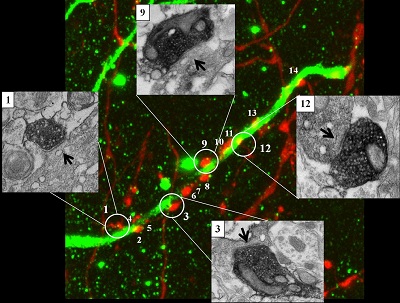
in vitro electrophysiological recordings
| Postsynaptic responses | 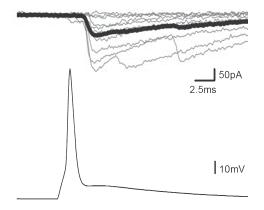 |
| Action potential |
and optogenetic tools.

This repertoire of the methods helps use to address complex questions, e.g. what are the principles of the wiring in cortical networks, or how do the neurons communicate with each other in local circuits?
Recently we have introduced juxtacellular recordings in anesthetized and head-restrained mice and a fear conditioning paradigm as a model for associative learning. Both methods are used to uncover the role of distinct neuron types in the amygdala nuclei.
